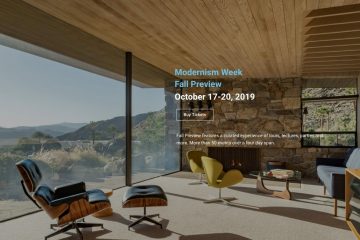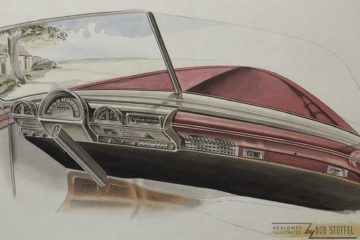During the 1930s, America was not only reeling from the Great Depression, but also seeing automobiles become the most common form of transportation. Replacing trains and horse-drawn buggies, cars were a much more comfortable mode of transportation. However, they were big and clunky, not very practical for the post-Depression family.
While mindful of the struggles of many Americans, yet also keeping an eye on potential overseas sales, Walter Chrysler had a vision for a small, affordable car. Chief Engineer Ken Lee decided to pull in Theodore Pietsch II, a fledgling designer, to create Chrysler’s vision- the Star Car. Sadly, the Star Car never made it to market. Even so, Pietsch’s designs were so good that he was hired to create a whole line of cars and their amenities, launching his career as an automobile designer.
Automobile Appreciation in the Blood
Theodore Pietsch II was born in 1912 to well-known Baltimore architect Theodore Pietsch and his wife Gertrude. Although his father never learned to drive, his mother is rumored to have been the first woman in Baltimore to drive a car. Pietsch’s uncle was also a car enthusiast. Arthur Stanley Zell, president of the Zell Motor Car Company and of Stanley Zell, Inc., was Maryland’s first automobile distributor.
It seems as though the love of automobiles and design ran deep in Pietsch’s DNA. Pietch was creating two-dimensional drawings for car catalogues in his teens, and later majored in design and mechanical drawing at the Maryland Institute, Baltimore. These drawings, coupled with his education, would land him his first role as an automobile designer.
It Began with Chrysler
After working for Walter Chrysler and Ken Lee for a few years, Pietsch decided it was time to move on to more challenging projects. Over the course of his career, Pietsch worked for almost every major US automaker, including Chrysler, Hudson Motors, Briggs Manufacturing Company, Ford, Studebaker, and American Motors.
In 1952, the future was looking pretty fantastic during Pietsch’s second stint at Chrysler. Yet when Pietsch received a call from world-renowned designer Raymond Loewy to join him on his Studebaker project, he couldn’t say no. The potential for exciting new challenges was too great to turn down, so Pietsch joined Loewy in his firm and got to work. Studebaker was on the decline, however, and a few years later Pietsch found himself out of work in the automobile industry.
A Changing Industry
Even though Pietsch was able to find auto design work again, the industry had changed so much that he found himself exceedingly unhappy and it began to affect his health. It was then that he decided to retire.
Regardless of how he ended his automotive career, his creations and designs were essential to the industry as a whole. Out of his limitless enthusiasm for automotive design and his creative genius, he was well-admired in the auto industry.
Leaving a Legacy
Thanks to his son, Theodore Pietsch III, Pietsch’s work has been catalogued and now resides at the Wolfsonian Institute. If you would like to peruse Pietsch’s sketches and other works, you can browse the catalogue.
Also, if you would like more information on Pietsch’s personal story, Theodore Pietsch III wrote his father’s biography, available for purchase on Amazon.
Best of all, if you would like to add a Theodore Pietsch II original work to your own personal collection, you can find two of his pieces here.
Enhance Your Collection
If you are looking for the perfect mid-century modern piece to begin, or add to, your own art collection, visit our GALLERY. We have beautiful, original pieces by Raymond Loewy, Vincent Raney, and many others.





